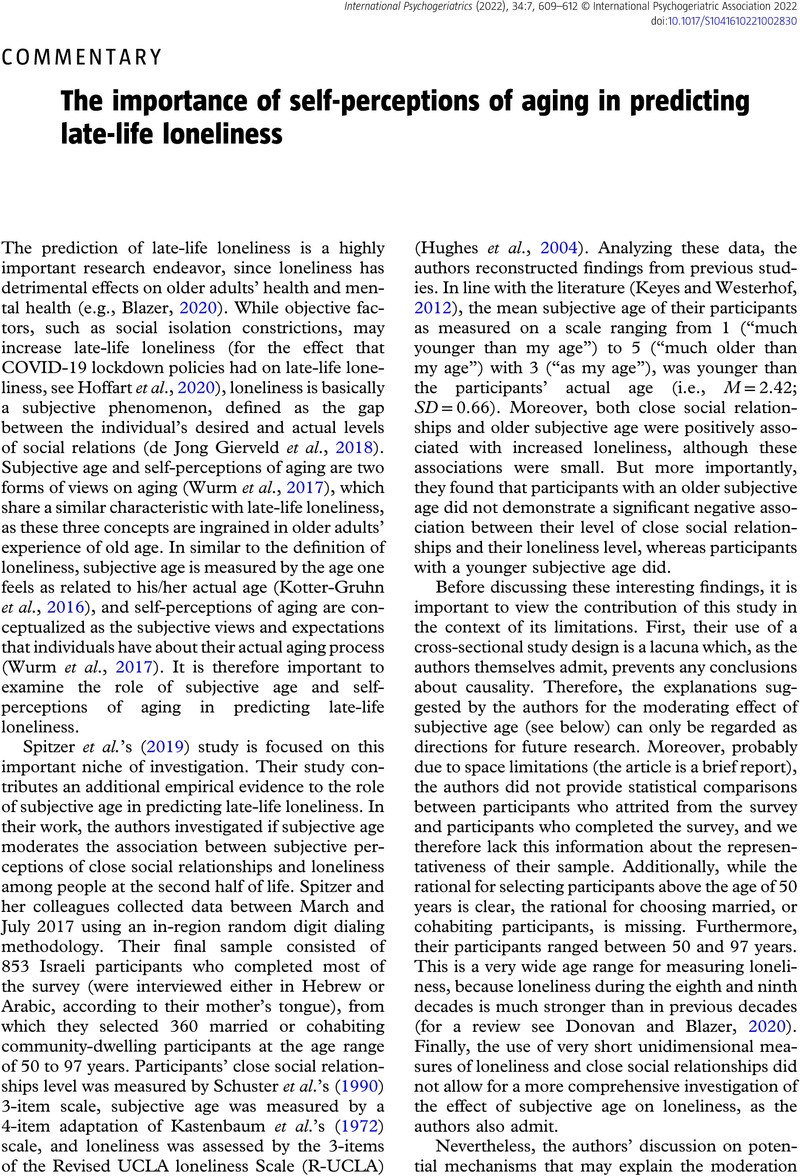Crossref Citations
This article has been cited by the following publications. This list is generated based on data provided by Crossref.
Sabatini, Serena
Turner, Shelbie
Brooker, Helen
Ballard, Clive
Corbett, Anne
and
Hampshire, Adam
2023.
Physical and mental health conditions account for variability in awareness of age-related changes.
Frontiers in Psychiatry,
Vol. 14,
Issue. ,
Hussain, Mariam A.
and
Palmer, Barton W.
2024.
Barriers to identifying and comparing rates of adaptive and maladaptive loneliness.
International Psychogeriatrics,
Vol. 36,
Issue. 9,
p.
699.
Zhu, Mingyue
Chen, Huimin
Ding, Xiaotong
Li, Zheng
and
Heyn, Patricia C
2025.
Effects of Self-Perception of Aging Interventions in Older Adults: A Systematic Review and Meta-Analysis.
The Gerontologist,
Vol. 65,
Issue. 4,



